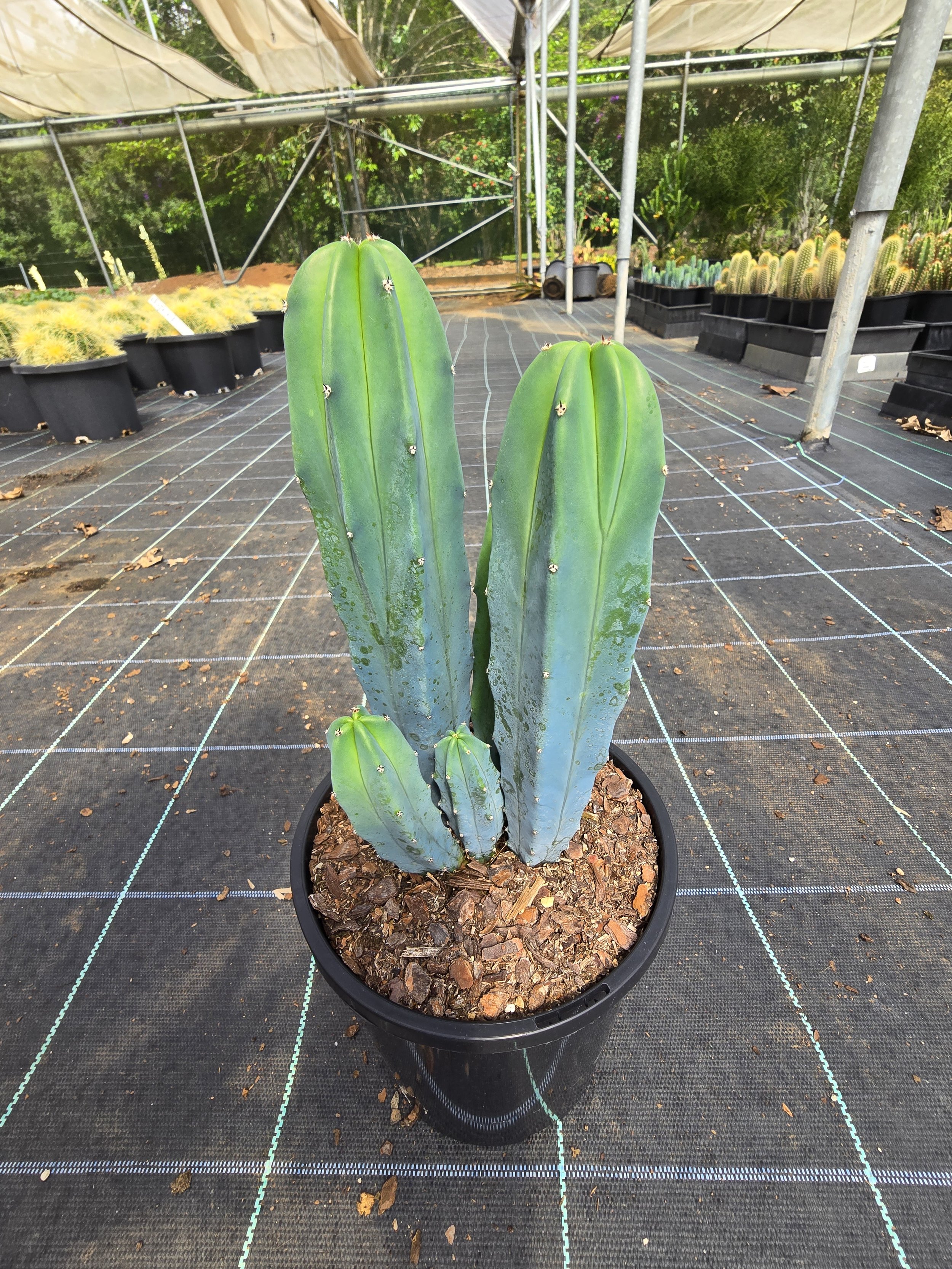 Image 1 of 1
Image 1 of 1


Myrtillocactus geometrizans
Myrtillocactus geometrizans, commonly known as the blue candle, bilberry cactus, or blue myrtle cactus, is a striking, fast-growing cactus native to central and northern Mexico. It thrives in arid, rocky environments and is celebrated for its sculptural form and bluish-green coloration.
🌵 Description
This cactus typically grows up to 4–5 meters (13–16 feet) tall, developing a candelabra-like branching structure as it matures. Its stems are thick (6–10 cm in diameter) and ribbed, usually featuring five ribs, though some specimens may have six. Each rib is lined with areoles spaced 1.5–3 cm apart, bearing 3 to 9 short spines .
In early spring, Myrtillocactus geometrizans produces small, creamy white flowers that are funnel-shaped and short-lived. These blooms give way to edible, dark purple berries known as garambullos, which resemble bilberries and are enjoyed fresh or dried in Mexican cuisine .
🌱 Cultivation & Uses
Highly valued in cultivation, this cactus is favoured for its rapid growth and is often used as grafting stock for slower-growing cacti. It prefers full sun, well-draining soil, and minimal watering, making it ideal for xeriscaping and drought-tolerant gardens. In Australia, particularly in Brisbane's subtropical climate, it can thrive outdoors with proper care.
Propagation is typically achieved through seeds or cuttings. When using cuttings, it's essential to allow the cut surface to callous over before planting to prevent rot .
Myrtillocactus geometrizans is not only a visually captivating addition to any cactus collection but also a practical choice for gardeners seeking low-maintenance, drought-resistant plants.
Myrtillocactus geometrizans, commonly known as the blue candle, bilberry cactus, or blue myrtle cactus, is a striking, fast-growing cactus native to central and northern Mexico. It thrives in arid, rocky environments and is celebrated for its sculptural form and bluish-green coloration.
🌵 Description
This cactus typically grows up to 4–5 meters (13–16 feet) tall, developing a candelabra-like branching structure as it matures. Its stems are thick (6–10 cm in diameter) and ribbed, usually featuring five ribs, though some specimens may have six. Each rib is lined with areoles spaced 1.5–3 cm apart, bearing 3 to 9 short spines .
In early spring, Myrtillocactus geometrizans produces small, creamy white flowers that are funnel-shaped and short-lived. These blooms give way to edible, dark purple berries known as garambullos, which resemble bilberries and are enjoyed fresh or dried in Mexican cuisine .
🌱 Cultivation & Uses
Highly valued in cultivation, this cactus is favoured for its rapid growth and is often used as grafting stock for slower-growing cacti. It prefers full sun, well-draining soil, and minimal watering, making it ideal for xeriscaping and drought-tolerant gardens. In Australia, particularly in Brisbane's subtropical climate, it can thrive outdoors with proper care.
Propagation is typically achieved through seeds or cuttings. When using cuttings, it's essential to allow the cut surface to callous over before planting to prevent rot .
Myrtillocactus geometrizans is not only a visually captivating addition to any cactus collection but also a practical choice for gardeners seeking low-maintenance, drought-resistant plants.